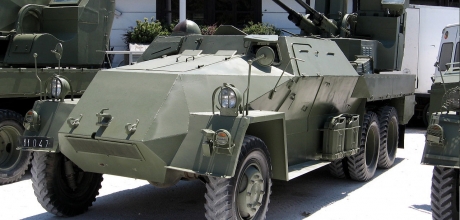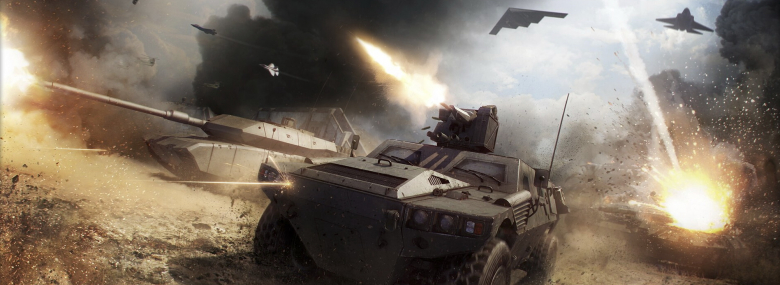
A guest article by one of our esteemed community contributors, Life_in_Black
In Part 1 we covered some of the nomenclature myths, but now we will take a look at the crown jewel of Israeli tank design, the Merkava Main Battle Tank.

Merkava wooden mockup from 1970
While the Merkava is certainly one of the most iconic tanks in the world today, there are several myths surrounding it that need addressing.
Myth 1: The Merkava is one of the most advanced tanks in the world.
When it comes to specifically the Merkava 1 and the Merkava 2, this is far from the truth. There is actually nothing at all technologically advanced or new about those two variants of the Merkava MBT, or, for that matter, the Merkava 3, but that's a topic for another day.
The layout with the engine located in the front of the vehicle was a novel idea for a tank, but it was hardly a technological marvel as APCs already had had a front-mounted engine for some time at that point. In fact, I would go as far as claiming that there was no real reason for the Merkava to exist.
Allow me to explain.
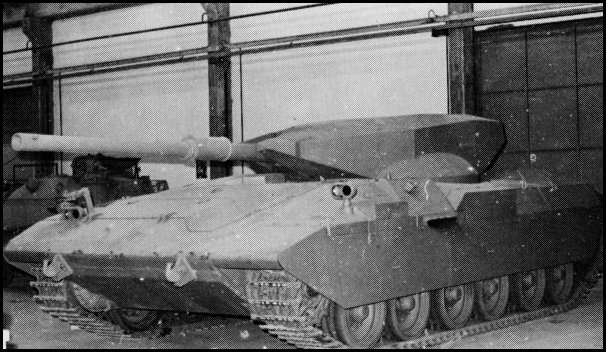
Wooden mockup on a Centurion chassis
In 1969, the British refused to sell Israel the Chieftain MBT despite the fact that for several years the Israelis had trialed two pairs of Chieftain Mk. 2s, one pair at a time. This left Israel in a pretty poor situation as the Middle East was very much an arms race going all the way back to the early 1950s and especially so after the Six-Day War. After exploring several options, Israel opted for building their own tank. Several designs and wooden mockups were completed in 1970, some of which featured a wooden Merkava-like structure added to a Centurion chassis. Early testbeds and prototypes were completed in 1970 using heavily modified Centurion hulls. One such prototype even used an M48 or M60 turret during testing.
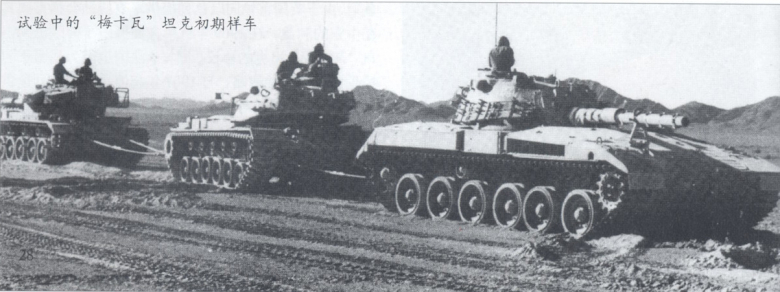
Centurion based prototype with M48/M60 turret
The essential misunderstanding about the Merkava tank is that Israel didn't have the industry at the time to actually build it. Yes, it could overhaul tanks and make some relatively small modifications such as fitting captured T-54/55s with the 105mm L7/M68 (which fit surprisingly well as the 100mm D-10T2S was quite large itself) and modifying Centurions to fit the AVDS-1790 diesel engine paired with Allison transmission. But building an entirely new tank was something else entirely. Things as basic as casting procedures had to be developed from scratch.
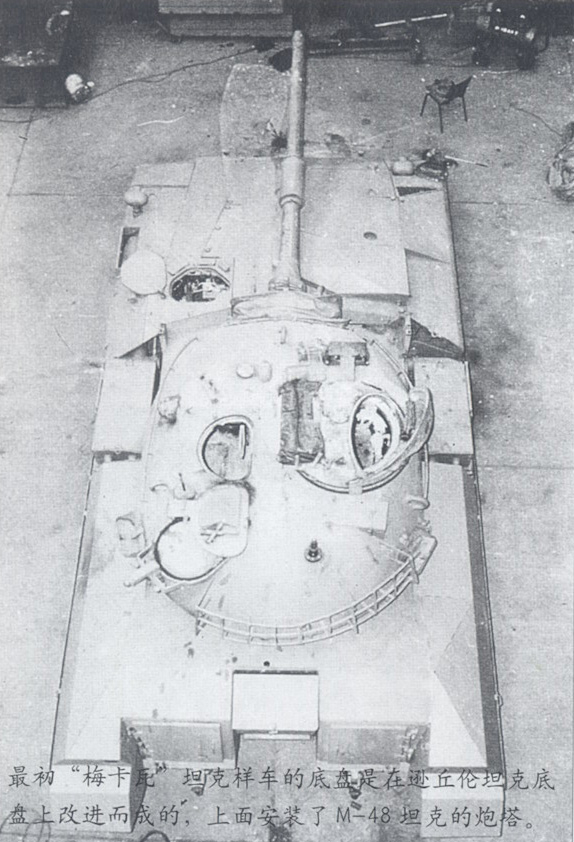
Centurion based prototype with M48/M60 turret
Israel was short on resources too, which is why in addition to using millions of dollars from the United States to develop the Merkava and the industry to build it, it was also importing steel from South Africa. This cooperation was quite extensive at one point as the South African Centurions were modified with Israeli assistance and the Olifant Mk. 1A is identical to a Sho't Kal. In fact, Israel offered South Africa the chance to buy the Merkava 1 for $810,000 each, but South Africa declined.
In any event, final prototypes were ready by 1974 and the Merkava 1 entered production in 1975.
One thing worth pointing out is that Israel did not build a pre-production series like most nations do. A pre-production series is a batch of vehicles the army puts through their paces to discover any faults or issues that can be corrected in the production version. Israel simply didn't have the resources for this.
The result of the Merkava project was a tank that was not only a few tons heavier than any other tank in Israeli service, but more importantly didn't offer anything new to Israel. Almost every component of the Merkava 1 was foreign or – if made in Israel – a licensed copy of something foreign. The list of Merkava 1 components includes:
- AVDS-1790 diesel engine
- Horstmann suspension
- Centurion tracks
- AN/VRC-12 radio (built under license)
- 105mm M68
- Cadillac-Gage Stabilization
- M13 Ballistic Computer
- Allison CD 850-6 transmission
- 7.62mm FN-MAG machine guns
As you can see, the components of the Merkava 1 are no different from the Magach 3s, Magach 6s and Sho't Kals already in Israeli service. What Israel succeeded in creating was actually just an indigenous copy of the M60A1, a tank which entered production in the early 1960s and entered Israeli service around 1971. But the Merkava was technically a tank made by and for Israel, which was all that mattered.
It doesn’t end there, however, as the lack of a pre-production series came back to bite the IDF after the 1982 war in Lebanon. Several serious problems were found with the Merkava 1s that saw combat there. First and foremost was the major shot trap at the back of the turret. This area turned out to be especially vulnerable to RPGs and other anti-tank weapons, which is why chains were a standard feature on the Merkava series starting with the Merkava 2. Additionally, older Merkava 1s were also upgraded with this feature. Even the Merkava 4 still has this shot trap and chains.

Merkava 4 still sporting the distinctive chains at the back of the turret
The other major drawback of the Merkava 1 was the old Allison CD-850-6 transmission, which was the same as that used in the Sho’t Kals, Magach 3s, Magach 5s, and Magach 6s. The Allison transmission could not handle the strain of the Merkava's weight under combat conditions (I would not be at all surprised if the transmissions themselves were taken from mothballed tanks after the Yom Kippur War and thus were already worn), so a new transmission was chosen – this time it was a German one, the Renk RK 304 model. This new transmission was a major improvement, making the Merkava 2 finally perform as the actual first production model with the Merkava 1 serving as the pre-production version.
Myth 2: The Merkava is one of the best armored tanks in the world.
Since there's nothing high-tech or new about any of the Merkava 1's individual components, what is the state of its armor?
The common myth is that the Merkava series is extremely well armored, but this is far from the case. There are several things to indicate this. First of all, the technology simply wasn’t there for Israel to even build the tank properly, let alone use advanced armor technology such as various composites or Chobham armor (which they were not granted access to). Instead, they went for conventional steel.
Steel parts would be cast and then welded together to form the basic hull of the Merkava. For the turret, the basic form (which used the same size turret ring as the M48 Patton/M60, 85 inches) was cast and then refined by hand. Additional steel sections were added to the front of the turret to give it the angular, arrow-like profile the Merkava 1 and 2 are known for.
Even so, in places the armor was not very thick at all and portions of the upper deck and engine cover (the engine plate is entirely removable) were only 20-30mm thick. The entire front right side of the Merkava hull (alongside the engine) was also entirely devoid of armor to fit in components related to the engine itself.
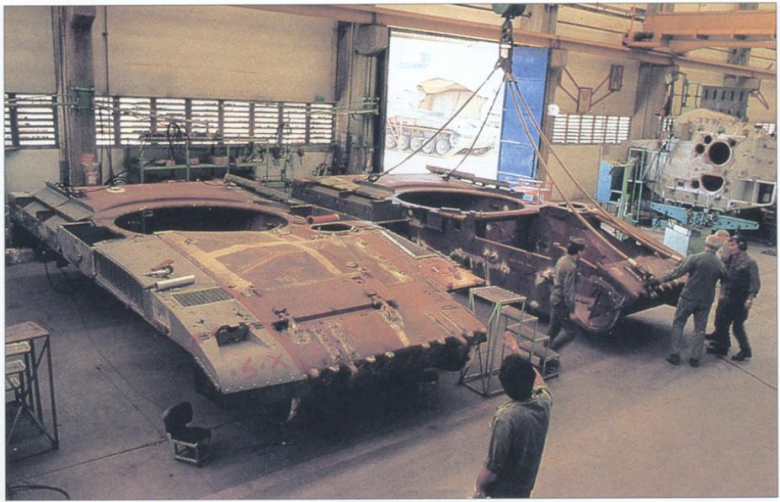
The gap on the right hand side showing the complete lack of armor
This isn't a lot of armor at all even when relying on the nice sloping of the upper glacis to bounce incoming enemy rounds.
The turret wasn't well armored either. The spaced armor made by welding steel onto the base turret does sound wonderful in theory, but there's something else that usually goes unnoticed: the trunnions for the 105mm M68 mounted within the "spaced" armor welded onto the turret. Even if the incoming enemy round did not penetrate into the cast turret itself, a round near the front of this spaced armor could result in the gun being jammed in place.
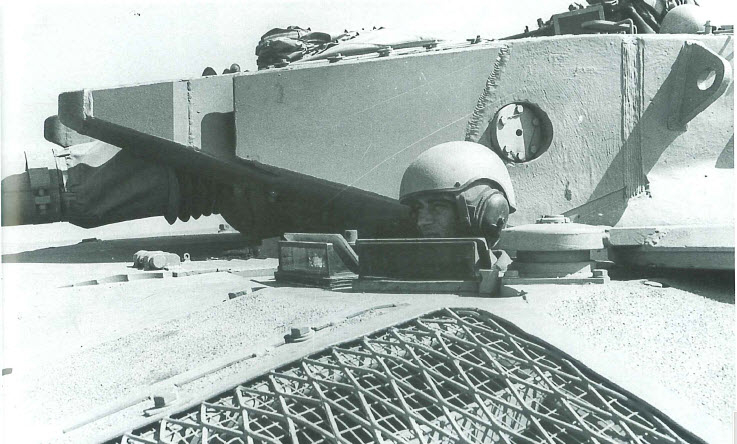
The exposed trunnions on the Merkava 1 turret (note the weld lines where additional pieces are added to the base turret)
The final piece of evidence that Merkava's armor was much thinner than most people realize is the complete lack of ERA anywhere on the tank. ERA, or Explosive Reactive Armor, basically explodes on contact with an enemy round, thereby forcing the round away from the tank using the explosion of the ERA "bricks". Israel developed ERA throughout the 1970s, culminating in its combat debut during the fighting in Lebanon in 1982 (mounted on both the Magachs and the Sho’t Kals). Yet despite using the Merkava in combat, ERA wasn't mounted on it.
The reason for this is simple. In order for ERA not to damage the tank it is mounted on, the underlying armor has to be of a sufficient thickness to handle the explosion and remain unscathed. Even former Centurion Mk.3 hulls, with their 76mm of frontal armor, were given ERA on the upper glacis, not to mention having ERA installed on the stowage bins.
But this is the thing about the Merkava; by designing everything in such a way as to act as extra protection for the crew, it effectively crippled any chance of the Merkava being able to use ERA. It also means that the Merkava can be knocked out of combat quite easily even if the tank is later salvageable and/or the crew gets out alive.
There is an image by Rolf Hilmes available on the internet, showing the supposed layout of the Merkava 1's glacis armor. It's completely and utterly wrong. There aren't multiple armor sections like that in the lower glacis, as there simply isn't any room.
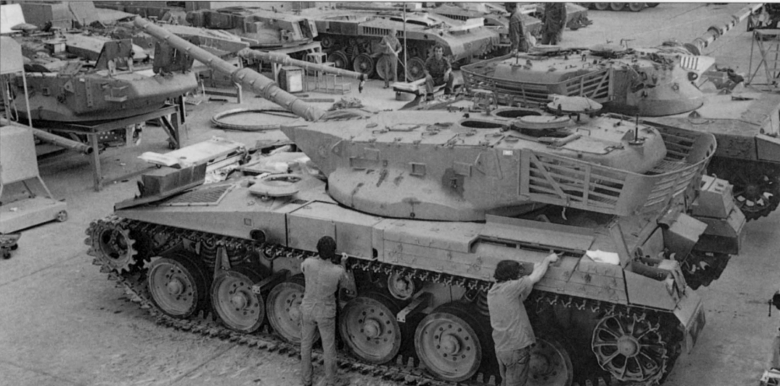
Merkava 1
Imagine the frontal armor of the Merkava as being similar to a triangle, with the flat base of the triangle on top. One side of the triangle is the outer plate of the lower glacis, while the other is the inner plate, separating the fuel tanks from the engine. And inside the triangle are the armored fuel tanks containing diesel – according to Marsh Gelbart, a 7cm fuel cell is equivalent to 1cm of steel protection against shaped charge ammunition.
What's more: while it sounds cool that the engine and fuel help protect the crew from enemy fire, the engine is not made of ballistic materials like the steel used in armor. Engines are made to be as light as possible, making good use of metals like aluminum and other lightweight metals to keep the weight down. Much like the fuel tanks, the amount of protection offered against kinetic rounds is negligible.
The same goes for all the other components placed in harm's way to protect the crew – they are pointless against kinetic energy rounds like APFSDS. The only real benefit is making the crew feel better protected, much like the Second World War practice of covering the tank with extra track links, sandbags, concrete etc. – none of that actually provided any actual additional protection to the tank but it made the crew feel better, resulting in slightly better performance.
While there might be some benefits against HEAT rounds, none of these solutions will stop APFSDS ammunition from penetrating. The crew might survive as the round might be slowed down enough to not puncture the crew compartment (although the driver doesn't enjoy such protection), but the end result is still going to be a dead tank.
And the Merkava is far from invincible. At least two Merkavas were knocked out in 1982 by Syrian T-62s, despite the Merkava not seeing much combat as the majority of Israeli tanks engaged in Lebanon at the time were Magachs and Sho’t Kals.
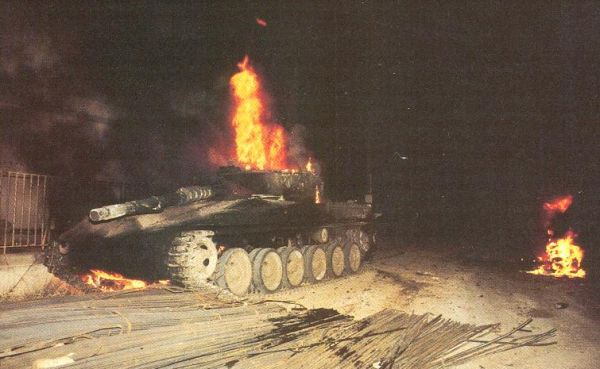
Merkava 1 destroyed in Lebanon, 1982
Myth 3: Crew survivability was the main goal of the Merkava project.
As I mentioned above, the main priority for the Merkava project when it was being designed was for Israel to build its own tank. Other alternatives had been considered, such as acquiring large numbers of American M60s (which happened anyway), rearming existing Magach 3s with a British 110mm rifled cannon, or developing their own tank. Even though the Merkava would be built using mainly US money, the appearance of autonomy on Israel's part was important to them.
With that in mind, crew survivability probably wasn't a big part of the equation at first. Bear in mind that while Israel could not afford battle losses that other nations might easily shrug off, it was also very assured of its own invincibility following the Six-Day War, going so far as to ignore a warning from King Hussein of Jordan that another attack was coming soon. This is why Israel fared very poorly at the beginning of the Yom Kippur War.
When we look at the Merkava in this context, we see a very heavy tank that wasn't quite as maneuverable as its peers at the time and that used a gun people were already familiar with.
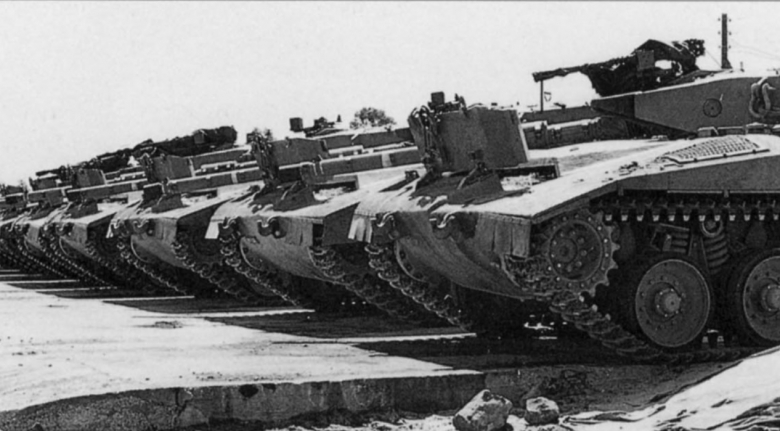
Merkava 1
It had a rear access hatch for resupplying ammunition and the turret could provide -8.5 degrees of gun depression 360 degrees around the tank. Gun stabilization was added later in the development. What all of this means is that the Merkava was designed to be a defensive sniper more than one leading an armored spearhead – a tank sitting behind cover (like say a berm of sand) and shooting enemy tanks at long distances without having to move for resupply, while the Israeli air force had total control of the skies. Of course warfare had changed for Israel by the time of the conflict in Lebanon and it became clear that Merkava 1 wouldn't be fighting long range conflicts in the Sinai or Golan Heights.
Myth 4: The Merkava is a tank that can also carry troops into combat.
Another big myth surrounding the Merkava is that it can be both a tank and at the same time carry infantry like an APC. While the Merkava does have a rear access door that the crew can use, there isn't any room in the back of the tank for people because the ammunition is kept there.
As I mentioned previously, the rear access hatch is intended to resupply ammunition while the tank is in hull down position. This is something other tanks can't do as most have to be reloaded through the turret, which would be exposed if the tank was fighting hull-down. The ammunition is palletized, allowing for easy resupply to the vehicle, thereby keeping it in combat for longer.

Merkava 3
With that in mind, the Merkava can in fact carry infantry or function as an ambulance carrying casualties, provided the palletized ammunition is removed from the vehicle. Of 62 rounds on the Merkava 1, only six are kept near the loader while 12 are stored in containers of two each and the remaining 44 are stored in eleven clusters with four rounds per cluster. By removing the ammunition to carry troops, the tank's ability to fight is limited to the six rounds located near the loader. In short, the Merkava can either be a tank or an APC/ambulance but it cannot be both at the same time.
Sources:
- Merkava: A History of Israel's Main Battle Tank by Marsh Gelbart
- Israel's New Merkava (War Data No. 10) by David Eshel
- Armoury 1: Merkava Main Battle Tank
- Merkava Main Battle Tank 1977-1996 by Samuel M. Katz
- Dtic.mil document ADA167793
- Congressional Research Service: U.S. Foreign Aid to Israel by Jeremy M. Sharp
- https://www.cia.gov/library/readingroom/docs/CIA-RDP84M00044R000200890001-1.pdf
- The Unspoken Alliance by Sasha Polakow-Suransky
- http://www.bits.de/public/articles/cast06-02.htm
- http://archive.is/yMse




